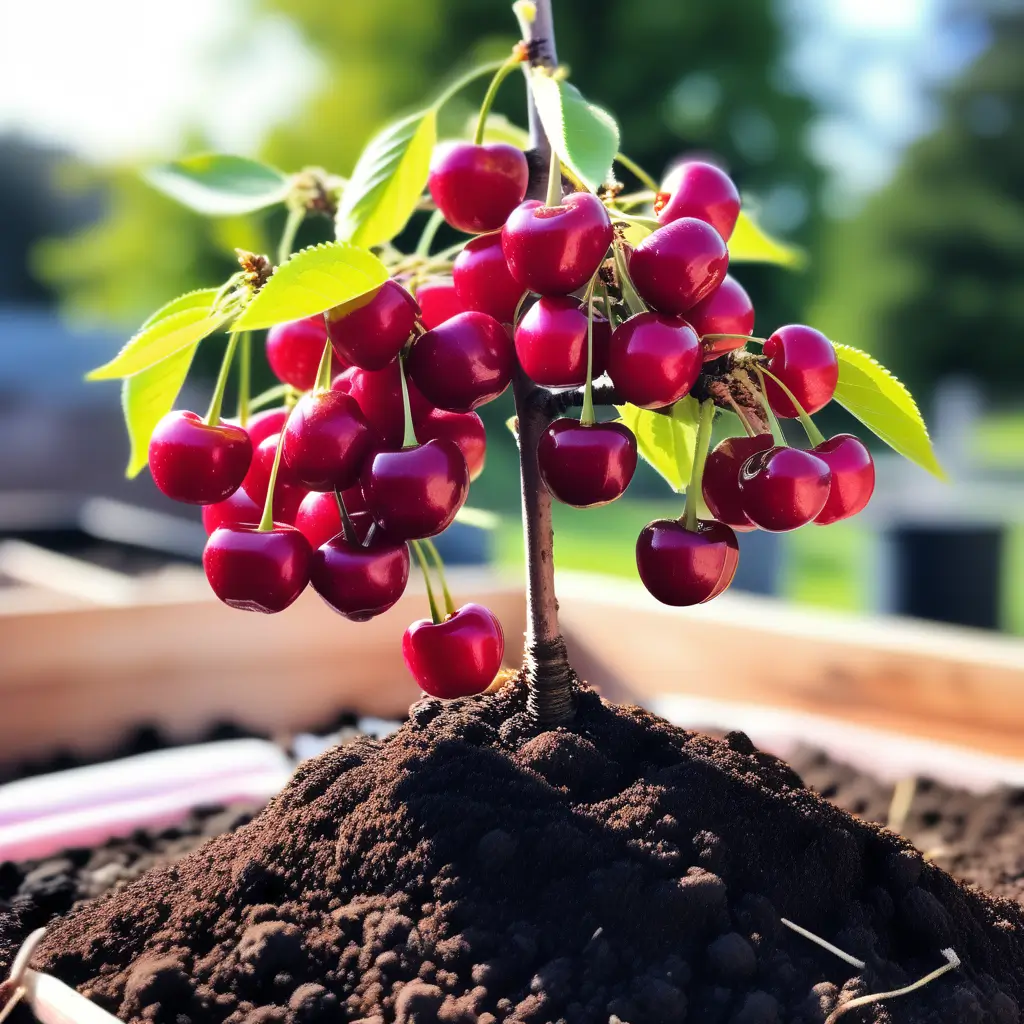Cherry trees are beloved for their early spring blossoms and sweet fruit. But if you’re considering planting one, you may be concerned about their roots. Homeowners often worry about tree roots infiltrating pipes, sidewalks, and foundations.
So are cherry tree roots invasive? The roots of most cherry tree varieties have only a moderate tendency to become invasive. Their growth habit depends on soil conditions, age of tree, and proper pruning and management. By choosing the right planting spot and cultivar, you can minimize problems.
What Makes Tree Roots Invasive
Invasive tree roots are generally defined as ones that grow largely on the soil surface, expanding horizontally and aggressively. They lift sidewalks, invade sewer lines and foundations, and outcompete nearby plants.
Cherry trees can develop shallow roots, but are less aggressive than notorious invaders like willows, poplars, and silver maples. Still, under certain conditions, cherry tree roots can cause issues.
Cherry Tree Root Growth Patterns
To understand whether cherry tree roots are invasive, you need to know how they grow. All cherry trees belong to the genus Prunus, which includes plums, peaches, almonds, and apricots.
Cherry species vary, but generally have a taproot system. A strong central vertically-growing taproot anchors the tree, while large woody lateral roots radiate out horizontally some distance from the trunk. This gives cherries better anchorage and stability than trees with predominantly superficial roots.
The spread of lateral cherry roots is often similar to the height of the tree. But root growth depends heavily on soil texture and depth. Denser or more compacted soil forces roots to the surface, while loose, deep soils encourage them to grow downwards.
Comparing Cherry Roots to Other Trees
How do cherry tree roots compare to other common landscape trees?
- Maples are highly invasive, with dense mats of fibrous roots even in deep soils. They aggressively sprout root suckers.
- Willows have aggressive, far-spreading feeder roots that choke out other plants. They easily penetrate plumbing pipes.
- Poplars develop massive root systems that can damage foundations and invade sewer systems.
- Oaks have a strong taproot and deep root system, with minimal invasive potential in loose or deep soils.
- Cherries have intermediate invasive potential for a fruit tree. Given room to grow, they are less aggressive than willows or poplars. But under certain conditions their roots can still cause issues.
Are Cherry Tree Roots Invasive Enough to Cause Damage?
Whether cherry tree roots become invasive enough to cause property damage depends on several factors:
- Soil conditions – Denser or compacted soils increase invasive root potential. Clay soils often result in shallower root systems.
- Age of tree – As cherry trees mature over decades, their root systems expand considerably.
- Root competition – Nearby pavement, structures, and plants force roots to spread instead of growing downwards.
- Pruning practices – Lack of pruning allows excess growth that the roots must support.
Under the right conditions, cherry tree roots can damage:
- Sidewalks or driveways – by displacing concrete slabs and asphalt.
- Sewer/drain lines – Roots seek moisture inside pipes, eventually clogging them.
- Foundations – Older trees may infiltrate cracks seeking moisture.
- Lawns and gardens – Surface roots compete with other plants for nutrients and moisture.
However, with proper management and siting, cherry tree roots pose minimal problems for most homeowners.
Tips for Managing Cherry Tree Roots

If planting a new cherry tree, here are some tips for minimizing root invasiveness:
- Allow ample room for growth. Space standard trees at least 20 feet, dwarfs at least 10 feet from buildings, pavement and utility lines.
- Install a root barrier to redirect roots downwards and away from infrastructure.
- Select dwarf or container-grown varieties. These have slower, less aggressive rooting than full-sized trees.
- Choose improved cultivars grafted onto rootstocks that resist suckering. Gisela® and MaxMaTM stocks are good options.
- Prune annually to maintain a healthy, manageable root system and prevent excessive growth.
- Monitor for invasive root suckers and remove promptly.
For existing cherry trees, try root pruning, barriers, or transferring problem trees growing in unsuitable sites.
Conclusion
Cherry tree roots can cause issues if given the opportunity. But their moderate invasiveness poses less risk than notoriously destructive tree species.
By providing ample space, planting compact varieties on rootstocks that resist suckering, and properly siting and pruning cherry trees, you can avoid most root problems. An experienced arborist can suggest tailored solutions for your landscape.
With sensible precautions, you can safely enjoy the spring blossoms and summer fruit harvest cherry trees provide. Their dazzling flowers and sweet cherries far outweigh their potential drawbacks.
